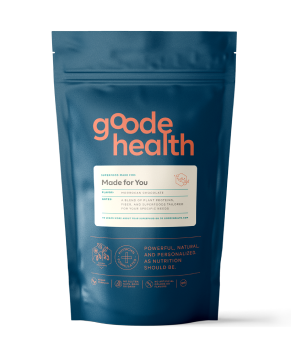By: Bob Arnot, MD
What has been learned from the longest living people?
Around the world, there are fabled populations who live to an extraordinarily old age. A big part of this longevity is a low burden of illnesses that might otherwise have killed them at an earlier age. There’s even a name and measurement for it…all-cause mortality. And it means just that. A lower rate of death of everything from heart disease and cancer to diabetes and even accidents. So, what are their secrets? They’ve been studied widely: A tight social network with lots of close friends and friends, daily moderate-to-vigorous physical activity, maintenance of a healthy body weight, fresh fish, fruits and vegetables, avoidance of tobacco use and alcohol abuse, and a favorable genetic makeup are among the factors.
What is the key factor in longevity?
So, we all know this healthy lifestyle is good for us but the key question scientists around the works have asked for decades is…so…what one factor…what one substance would decrease the risk of all-cause death? In a single word, we now know the answer is polyphenols… the very powerful anti-inflammatory substances found in fresh fruits and vegetables, teas, cocoa and fine wines. Just like these polyphenols protect fruits and vegetables from heat, cold, wind, high altitude, ionizing radiation and pests, they also help protect us. How did scientists deduce that? They found that European populations who had the very highest levels of polyphenol derivatives in their urine had the lowest all-cause mortality. In fact, by an extraordinary margin. Those with the highest level of phenolic compounds excreted in their urine had a 30% decrease in all-cause death. To be blunt, when polyphenols are combined with components like fiber, vitamins, and proteins, there is simply nothing in all of medicine or surgery, nothing in natural supplements or diets that comes even close.
So how do polyphenols work?
Scientists have pieced together this widely held theory. Polyphenols are ingested and transit through our intestines but are mostly too large to be absorbed. They first do their work on the microbiome, transforming it from an often unhealthy assortment of fungi, bacteria and viruses that live in our large bowel into a much healthier collection of microorganisms. The improved microbiome cleaves and processes polyphenols into smaller phenolic compounds that can be absorbed into the bloodstream and tissues where they can work their magic on the contents of the blood like cholesterol and the lining of the blood vessels called the endothelium. In fact, a sick endothelium is the earliest predictor of coronary artery disease.
What is the proof behind Goode Health?
To test this thesis, we devised a scientific trial. Rather than taking a shotgun approach of many different polyphenols, we selected the very most powerful of all polyphenols, thanks to incredible research by Dave Nieman PhD and his team at the North Carolina Research Campus. Those are isoquercetin from a variety of plant sources, catechins from green tea extract, and anthocyanins from bilberry extract. After our subjects consumed the Goode Health shake with these polyphenols for only two weeks, we were literally stunned by the results. I rarely get really excited but I could barely contain my enthusiasm when I reviewed the results with the team at the University of Texas, worldwide specialists in endothelial cell function. First, the polyphenols had done their job in the bloodstream. There was a striking decrease in cholesterol levels. But the real hallmark of success would be in the measurement of endothelial cell function, where we saw dramatic improvements.
What is endothelial cell function?
Endothelial cells line all blood vessels and regulate exchanges of nutrients between the bloodstream and the surrounding tissues, organs and cells. A test for endothelial cell function detects if your blood vessels are young and bouncy, vibrant and full of life or if they have already started to stiffen on their way to hardening and even developing the cholesterol plaques that can cause heart attack and stroke later in life. A blood pressure cuff is put around the upper arm and the supply of blood completely cut off for a short period. Then the blood pressure cuff is released. A highly sophisticated 3D echo device then measures the diameter of the arteries and the flow of blood. A poor result would be a narrowing of the artery and decrease in blood flow. In our case, there was a robust increase in the diameter of the blood vessels and increase in flow. In fact, the 50% increase in diameter significantly exceeded that found for proven and popular products using a high-grade cocoa.
What is next for Goode Health?
So, what’s next? This initial pilot study was just a signal - a proof of concept with 6 individuals at early risk of heart disease. Now we’ll embark on a robust clinical trial with a placebo group to compare the results.
What is recommended for longevity?
In the meantime, what can you do? Stick closely to a Mediterranean diet. Eat all the fresh fruits and vegetables that you can. And try the nutritional beverage our team has every morning from Goode health, that includes these three powerful polyphenols, in addition to the right amount of protein, fiber, and all essential micronutrients. In accordance with FDA regulations, we’re making no implied link to a decrease in disease, but we are demonstrating a robust improvement in function, one we think will be very important to millions of people around the world.
